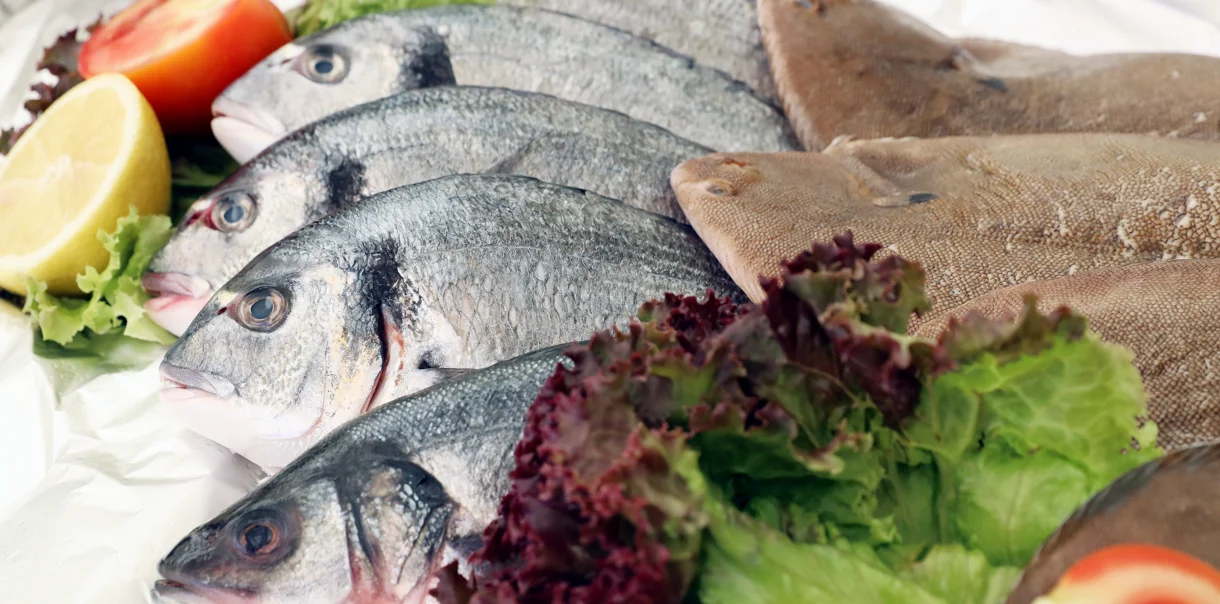In the traditional Istrian cuisine, food is most commonly cooked, rarely fried. The primary role is occupied by autochthonous and locally grown vegetables, herbs and spices. Spices usually have a mild taste, and chefs will often decide to use their undomesticated counterparts. Fish and poultry dishes are typical in Istrian cuisine. The two most important ingredients are without a doubt home-made olive oil and wine. Olive oil, wine and sea salt, produced in the Slovene Littoral, have a worldwide reputation today.
The olive tree is a Mediterranean plant. Thanks to its rich cultural heritage, appearing in myths as well as in the lives of modern people, it is an inexhaustible source of tales. Due to specific climate conditions in this area, Istrian olive oil is particularly well known for its distinct flavour.
Wild asparagus, locally known also as “šparoga”, is a typical Mediterranean plant. It grows at the edges of forests in Slovene Istria. This dioecious herbaceous perennial grows up to one meter in height. It's harvested in springtime from mid-March to mid-May. An old Istrian saying goes: “April spareser, maio sareser” (In April asparagus, in May cherries).
Persimmon - Also known as the fruit of the Gods. Persimmon can be enjoyed only a few short autumn and winter months. It was brought to Europe around 1870 and is primarily cultivated in Mediterranean countries. In Istria and Slovene Littoral, persimmon was first grown later, during the first decades of the 20th century. Solinar Tourist Society from Strunjan is extremely successful in attempts to interconnect the local natural heritage with the tourist offer. Every year, they hold a traditional persimmon festival which greatly contributes to the tourist offer of the municipality, which relies greatly on the potential of its natural heritage.
The artichoke was already known by the Ancient Greeks and Romans. During their golden age, artichokes were grown as vegetables and as ornamental plants. They were eaten cooked as well as raw. The artichoke was later forgotten, and it was only in the 20th century that its healing power associated with the liver and gallbladder disease was rediscovered. The artichoke is similar to thistle and grows up to 120cm in height. Cooked buds or flowers are usually consumed. Mediterranean and Istrian cuisine knows a plethora of exquisite dishes made from the artichoke.
Piran sea salt - For 700 years, salt pans workers have been producing the Piran seas salt in line with the medieval process, and have continued to harvest salt using traditional tools until this very day. The biggest secret to the quality and natural white colour of the Sečovlje sea salt is the clay soil in salt pans covered with a thin layer of “petola”, a few millimetre-thick foundation of biosediment composed of minerals and microorganisms. Salt production depends greatly on the forces of nature – the sun, wind and sea – and the hard work of salt pans workers. The Sečovlje sea salt is light, rich in sea minerals and has an exquisite taste giving food a noble aroma.
Fish and meat - Cooked meat dishes (fish, mutton, poultry, beef) are well known for their method of preparation. “Žgvaca” is a meat dish in a sauce of autochthonous Istrian herbs. A number of dishes are prepared in a “padelle” (pan with handle) or under a “črepnja” (lid for baking with coals). Istria is also known for delicious fish soups, marinades etc. Despite attempts to preserve and resuscitate the traditional cuisine, there is a tendency in the Littoral for a transition to a more modern cuisine, composed of a variety of fish and meat dishes, pasta and pizzas.
Vine – The Istrian soil gives life to the autochthonous variety of the vine which produces grapes used in the production of the renowned refosco wine. Malvasia is the typical white wine. Both wine varieties are served with typical Istrian dishes: prosciutto, cheese, bread with home-made olive oil; bobiči(corn stew), sweet štruklji dumplings stuffed with meat, “blood polenta”, omelette with wild asparagus, traditional Istrian pasta – “bleki”, “blečići”, “fusi” – risottos, seafood (in “čežama” – marinated anchovy soup, or “brodet” – fish soup), or with sweet sandwiches, rolls and fried pastries “fritolas”.
Fritaja - An egg omelette, typical for Istrian cuisine. There exist many varieties of fritaja. The selection and preparation come down to the chef's imagination, taste and what can be found in the fridge. This way, we can make fritajas with prosciutto, bacon, asparagus, aubergines, mushrooms, truffles, spring onions or any other vegetable, escargot or cheese.












